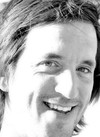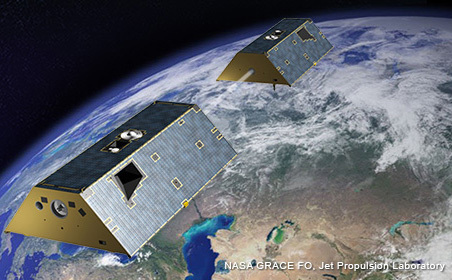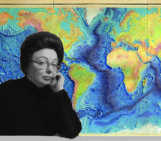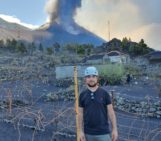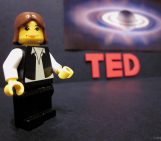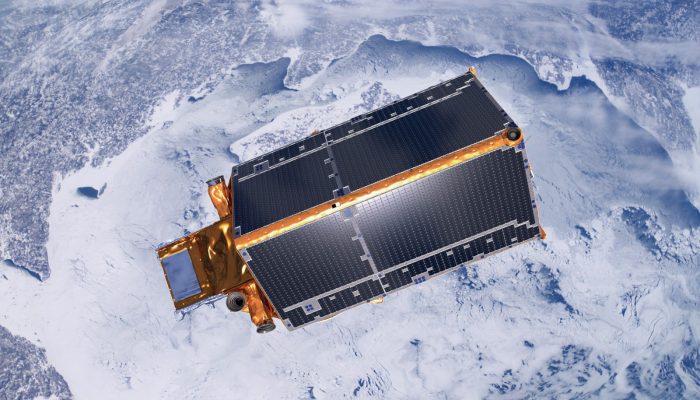
Geotalk is a regular feature highlighting early career researchers and their work. In this interview we speak to Bert Wouters, a polar scientist at the University of Utrecht, and winner of one of the 2016 Arne Richter Awards for Outstanding Young Scientists. At a time when the polar regions are facing increasing challenges resulting from climate change, understanding how they might respond to them is crucial. Bert’s PhD research using satellite data (from the GRACE mission) set a benchmark for the analysis and interpretation of data like it. As his career has advanced, Bert has made contributions to a number of fields within the polar sciences, from ice-sheet research, glacier and ice-cap mass-balance studies, through to ocean modeling and climate prediction. It is this notable breadth of knowledge, accompanied by an impressive publication record which makes Bert a worthy awardee.
First, could you introduce yourself and tell us a little more about your career path so far?
I was born and raised in Belgium, but moved to the Netherlands to study aerospace enginieering at the TU Delft when I was eightteen. During my PhD there, I focused on the use of satellite gravity data for climate science. Back then, the GRACE satellites had been in orbit for only a couple of years, and people were still learning how to handle and interpret this completely new set of data. The observations contained a lot more noise than expected before launch and one of the first things I did was to develop a method to remove this noise. Once we managed to do so, it opened up a whole new world. For the first time, we could track the movement of water mass on the Earth surface from month to month. These were certainly exciting times! My supervisor gave me the freedom to do pursue my own interests and I used the GRACE data to study many different topics, ranging from hydrology to oceanography and solid earth science. In the last year of my PhD, I focused on the cryosphere, which is still my main field of research.
After graduating, I did have the opportunity to continue in geodesy, but I felt it might be better for my overall development to step out of my comfort zone and move to a different field. I started a post-doc at the Dutch meteorological office (KNMI), with the aim of improving predictions of the Atlantic meridional overturning circulation. This is part of the global ocean conveyor belt and transports heat around the Earth. It has an important impact on the climate in the Atlantic region (think The day after tomorrow, minus the Hollywood drama) and my job was to predict its behaviour on decadal time scales using a global climate model. The first year was pretty though, but I learned a lot about the complexity of climate physics and numerical modeling, and I still profit from this experience today.
In 2012, I was awarded an ERC Marie Curie-Skłodowska fellowship and moved the University of Colorado in Boulder for 2 years to work with John Wahr. He was one of the founding fathers of the GRACE mission and a true giant in the field of geodesy. I had not met him before I started my fellowship, but he turned out to be not only a great scientist, but also one of the kindest and friendly persons I have ever met. I continued to refine my GRACE methods for monitoring of the cryosphere, but also started looking at different types of remote sensing data, in particular height measurements made by the Cryosat-2 altimetry mission.
This satellite had only been launched 2 years before and data was being released bit by bit.It gave me a great drive to be among a select group of people having a first look at these new observations. In the last year of my fellowship, I worked at the University of Bristol with Jonathan Bamber (the EGU’s current vice-president) to further refine the Cryosat-2 processing and combine it with the GRACE data. The combination of two independent measurements provides a powerful tool to map the ongoing changes in the cryosphere and yielded in some very exciting results.
Since November 2015, I’m a post-doc at the Institute for Marine and Atmospheric Research (IMAU, Utrecht University), renowned for their modelling of the regional processes (snowfall, melt, etcetera) on ice sheets and glaciers. Such models, together with in-situ observations, are indispensible to understand the changes we are seeing in the satellite data.
During EGU 2016, you gave a talk which focused on melting of glaciers and ice-caps in the North Atlantic. During the talk you spoke about the implication such melting might have on global sea level rise. Could you tell us a little more about your findings?
It’s a well known fact that the ice sheets of Greenland and Antarctica are losing ice. Studies about these regions usually receive a lot of attention from the media and general public, and rightly so: they contain a huge reservoir of ice and will be one of the major contributors to sea level rise in the coming centuries.
But we shouldn’t forget about the smaller ice caps and glaciers in other parts of the world. Many of them are located in regions which are experiencing rapid warming and because of their small size and the delicate balance between snowfall and melt that shapes them, they are extremely vulnerable to changes in the local climate. The GRACE and Cryosat-2 data show that glaciers in the North-Atlantic region currently contribute as much to sea-level rise as the Antarctic ice sheet and will continue to do so in the future. In fact, models indicate that some of the ice caps are already beyond a point of no return and that glaciers and ice caps will be one of the major sources of sea level rise in the coming decades.
Why have the glaciers and ice-caps of the North Atlantic region received such little attention, at least until now, considering the potentially large impact their melting can have on global sea levels?
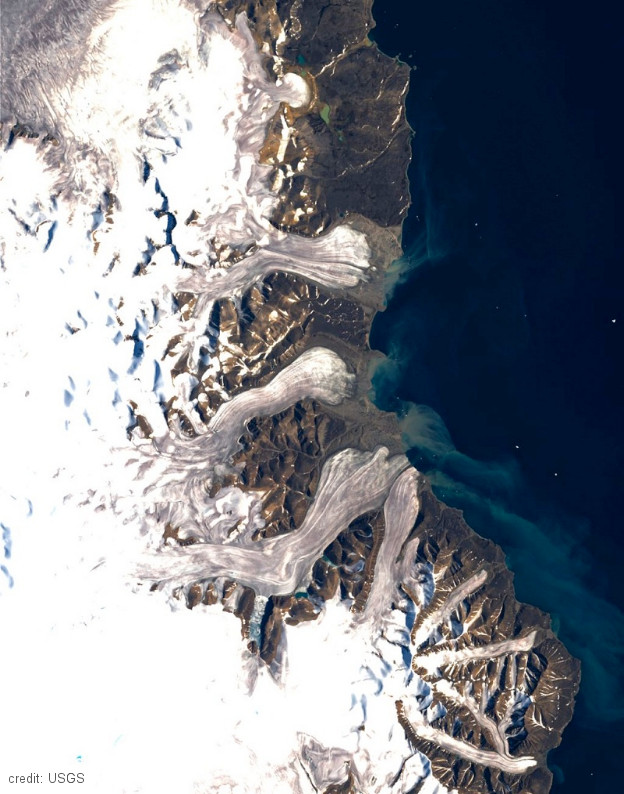
Tthe Devon Ice Cap, located in eastern Devon Island, Nunavut, Canada is one of the North Atlantic region ice-caps which have received little attention.
Well, of course I’m not the first to study these glaciers and ice caps. In fact, some individual glaciers have been monitored for over a hundred years. These records are extremely valuable and vital for validating and interpreting satellite observations, and already showed that many glaciers are retreating.
However, taking in-situ measurements on a glacier is a challenging job, and often expensive, so these observations are generally made on small glaciers, which tend to be located in easily accessible locations with a maritime climate. This means that the few hundreds of glaciers that are monitored on a regular basis are not necessarily representative for the roughly 200 000 glaciers world wide. We really need satellite observations for that. So maybe one of the reasons that they have received little attention is because we just didn’t know how bad things are until recently.
Another reason is that their big brothers, Antarctica and Greenland, pose a huge threat, too, especially when considering longer, millenial, time scales. There’s only so much research funding out there, so in a way it makes sense that the scientific community focused on this first when global warming came into the picture.
A common theme throughout your research has been using satellite data and geodesy to unravel the secrets of our planet’s polar regions and oceans. What attracted you to this particular branch of the Earth sciences?
To be honest, I ended up in this field more or less haphazardly, it wasn’t part of a grand master plan I had when I started university. Back then, my main interest lay in aerodynamics, but by the time I had to choose a topic for my master thesis, I couldn’t imagine myself working on that for the rest of my life. When one of my supervisors suggested I work on remote sensing of sea level rise, it felt as if it was the right thing to do and that’s how it all started.
Having said that, as a kid, I was fascinated by two things: science, inspired by a nutty professor in my favorite comic books, and nature (around the age of six, I started a club together with a friend to save the planet) and in a way I’m combining these two things in my present job. So maybe I was just destined for this after all…
Also, at a time where travel has almost become a commodity to most people, I find it fascinating that there are still places on Earth where no one has ever set foot and which we can only study using remote sensing. Its very intriguing and almost a privilige to be able to map these places at an ever increasing level of detail, especially with all the dramatic changes that are now going on in the polar regions.
Quoting the late Gordon Hamilton: “Every time I open up a satellite image the potential is there for something astonishing to have happened since the last time I looked.” That sums up pretty well what makes this job so exciting, I think.
It’s clear that satellite data is invaluable when it comes to understanding changes on our planet. How do the GRACE and Cyosat satellites help in that effort?
GRACE is the only mission that can directly weigh the ice caps and glaciers, but it has a very coarse resolution, typically a few hundreds of kilometres. It helps to track the changes in ice mass on a regional scale, but that’s far too low to identify individual ice caps or glaciers. Cryosat-2 allows us to do so, but it measures height changes, and certain assumptions need to be made to translate this to mass changes, which can be verified against the GRACE observations. So these two missions nicely compliment each other.
Thank you for talking to us Bert. We’ll round-off this interview with a final question about careers. As a researcher who has made huge advances in this field, what advice would you give to someone who wants to pursue research in the field of geodesy and remote sensing, particularly when it comes to focusing on the planet’s polar regions?
Keep an open mind and don’t be afraid to stray outside your own research field! Everything is connected in climate science, the polar regions aren’t an isolated system and to understand what’s going on and how to optimally use the satellite data, a basic knowledge of climate physics helps a lot.
Many problems we’re facing in geodesy and remote sensing also pop up in other fields, in a slightly different way and often other people have already found a solution to your problem. For example, to filter out the noise in the GRACE data, I used a method that’s commonly applied in atmospheric science. My second advice would be: collaborate! The problems we’re facing are so complex that it’s impossible to solve everything on your own. Interact with other scientists, within and outside your own field, it pays off.
And don’t be afraid to share your data and preliminary results with others. There’s a lot of pressure, especially on starting scientists, to publish as much as possible which sometimes makes it tempting to keep your data to yourself. But many times, other people have that piece of data that would make your study so much more interesting. And if someone else publishes a paper on something you’re working on, don’t hold any grudges, but try to find a different angle to it and do better. There’s some much to study, and science shouldn’t be about competition, but about collaboration.
Geotalk is a regular feature highlighting early career researchers and their work.

